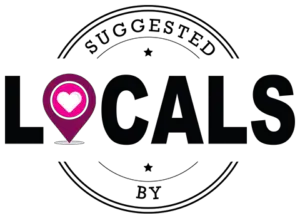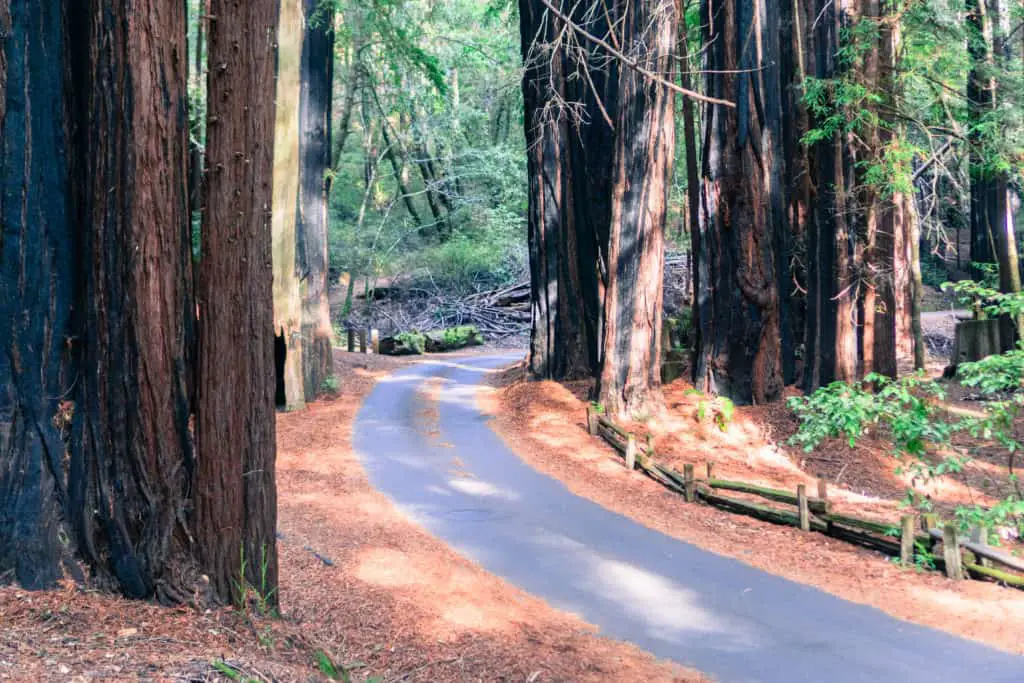
Santa Cruz is a major destination for beach lovers and tourists, but it has a lot of problems hidden below the sunny surface. My family is very connected to this area, but despite the love I have for it, Santa Cruz has plenty of flaws that every potential move-in should know about.
I found each of these Santa Cruz flaws by researching local and state data, talking with other locals, and drawing on my own experience in this city. The following drawbacks vary in severity, but each of them can be dangerous or inconvenient in its own ways.
17. Slow Traffic
Santa Cruz is a popular tourist destination and home to about 65,000 locals. This means that the roads (especially those leading to the beach) can get quite crowded and backed up.
Many of the smaller neighborhood streets in Santa Cruz are also narrow and difficult to navigate. Some of them are built into steep slopes, which adds the extra difficulty of an incline.
I’ve spent a long time trying to get in and out of driveways in difficult-to-reach houses. This is just part of the deal when living in Santa Cruz though! In addition, traffic jams are common on the larger roads and it often takes much longer than it should to get anywhere.
16. Chilly Weather Conditions
Santa Cruz is a beach town and many houses are close to the ocean. While California is quite warm in general, Santa Cruz can get some pretty chilly weather that you wouldn’t expect at a sandy beach.
Because of its location and weather conditions, Santa Cruz frequently gets chilly fog during the night and mornings. The humidity and cool temperature can drain the warmth from you faster than a cold wind!
And if you are interested in visiting the ocean, you’d better wait for a hot day. The ocean around Santa Cruz is freezing cold and you often need a wetsuit instead of a swimsuit to fully enjoy it.
15. Tourist Town
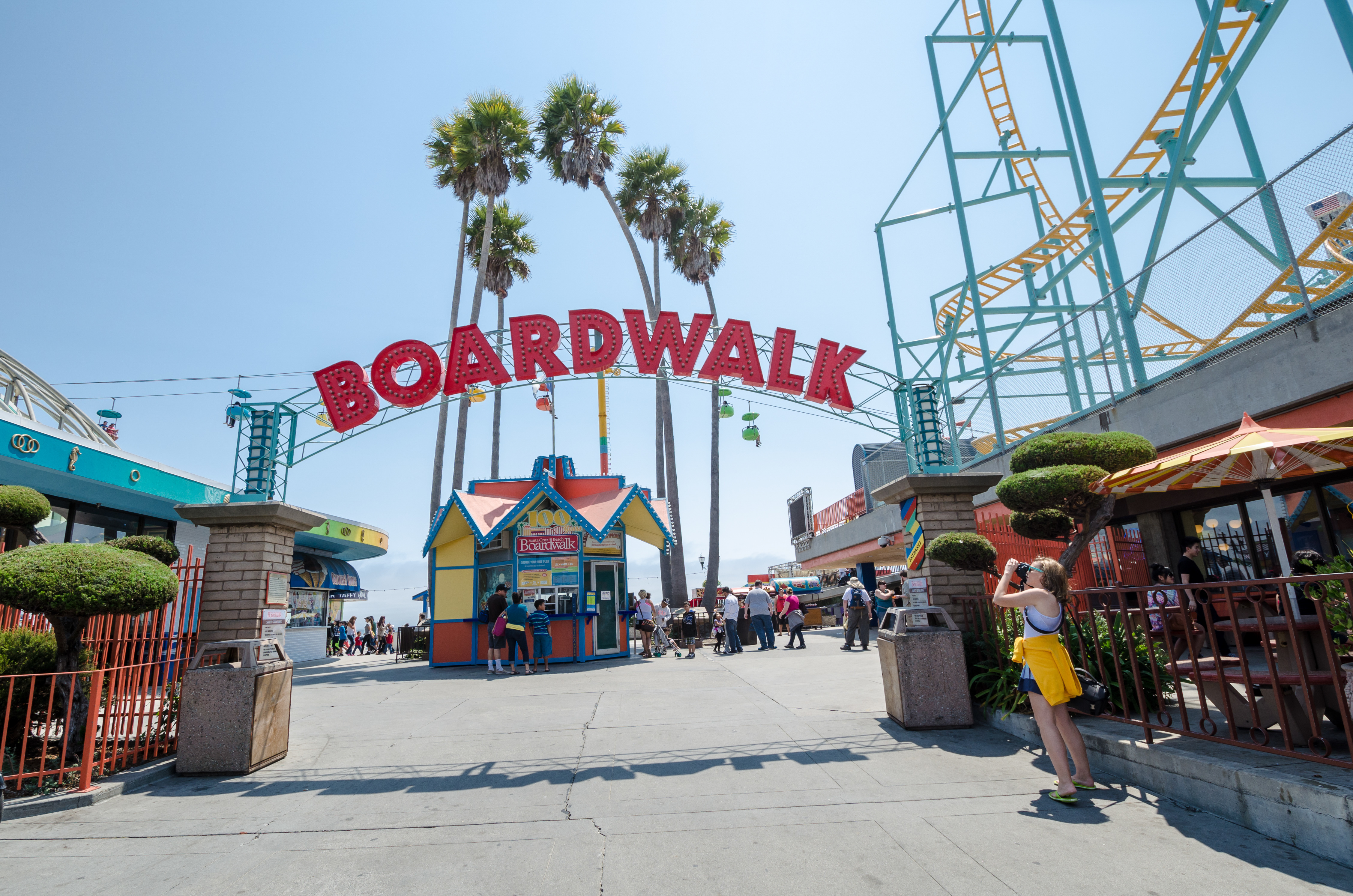
Santa Cruz is also a popular tourist destination. It does offer many fun local attractions, such as the Santa Cruz Boardwalk amusement park and beachside music venues.
While these might be fun, the masses of crowds they draw in aren’t. The influx of travelers can overcrowd roads, beaches, restaurants, and other local venues.
If you’re a diehard surfer, you might also notice masses of wetsuit-clad tourists dropping in on your waves and clogging up your favorite beaches. Everybody needs a vacation sometimes, but locals often get the short end of the stick in Santa Cruz.
14. Poor Water Quality
While public tap water is technically safe to drink, some California water supplies have been exposed to arsenic and uranium.
Needless to say, this can affect the taste and overall health quality of the water in Santa Cruz.
The water quality ratings are hard to generalize from one state to another, but California ranks in the bottom 5 states for water pollution in some studies.
With the use of a tap filter or some bottled water, this issue might not be a big deal for everyone.
13. Income Inequality
Another overarching issue that California (and Santa Cruz by extension) suffers from is income inequality. Santa Cruz and the surrounding areas show a shocking contrast between the ultra-wealthy and those who are at or below the poverty line.
California’s economy is stronger than the entire nation of the U.S. but it’s not balanced between those who live there.
California is in the top 5 states where income inequality is the worst. Not only is it bad; it’s getting worse all the time.
12. Large Homeless Population
Partly due to the income inequalities of the area, California has the third-highest homeless population in the U.S.
The majority of these people are living without shelter as well, which is causing strain on the infrastructure and sanitation standards of the whole state.
Sickness spreads more easily when there is a large homeless population, and infestations of vermin are attracted to the increased amount of garbage and sewage that build up.
Desperation and untreated mental illness can lead to violence in the homeless community as well, and there have been multiple clashes between city management and homeless civilians over the past few years.
The resources of the state and federal government haven’t been properly allocated to address this issue.
11. Syringe Litter

Another issue that Santa Cruz faces is litter. Used medical syringes are one of the most common items that are left abandoned on streets, beaches, and other public areas.
These unsanitized needles pose a serious health hazard to the public, as well as an environmental issue for ocean life. In 2018, Santa Cruz sanitation crews cleaned up more than 6,000 syringes in the downtown area alone. However, more are appearing all the time.
This hazard is becoming a major problem on popular beaches because the needles are hard to see and clean up. Infections and cuts are common, especially among small children.
10. Unsustainable Infrastructure
Santa Cruz (like many urban areas of California) also faces difficulty when it comes to growth and expansion. When the roads and public infrastructure of the cities were created, the population was much smaller.
California’s population has boomed over the years and the construction just isn’t keeping up. Roads aren’t built to accommodate this influx of new people and there is a significant strain on water resources, energy, and waste processing as well.
Traffic jams are common in Santa Cruz, and blackouts due to power failure occur frequently as well. The city just wasn’t built to sustain the number of people who have since moved in, and it’s likely that things will just get worse over time.
9. Low Education Ranking
California also has one of the worst education rankings in the United States. They are in the bottom 10 lowest education scores (8th overall) and have massive problems with standardized testing and allocating resources.
There are a variety of schools available in Santa Cruz, ranging from public schools to private universities. Obviously these each approach education and testing in a different way, but the overall results aren’t good.
Studies indicate that the education quality that students receive largely depends on their income and where they live.
This widens the class divide and makes it harder for students to access equal opportunities. This article details some of the issues that California faces when dealing with schooling.
details some of the issues that California faces when dealing with schooling.
8. Highest Income Tax in the Nation
California needs to pay its dues to the state and nation. Due to its large population size and comparatively strong economy, California faces a heavy tax burden.
In many recent years, they have had some of the highest income taxes in the nation. Depending on the specific area, income tax can be as high as 13% in California.
Santa Cruz also faces a higher sales tax than many of its neighbors. The sales tax in Santa Cruz is 9.25% which is higher than the national average.
7. Bad Drivers
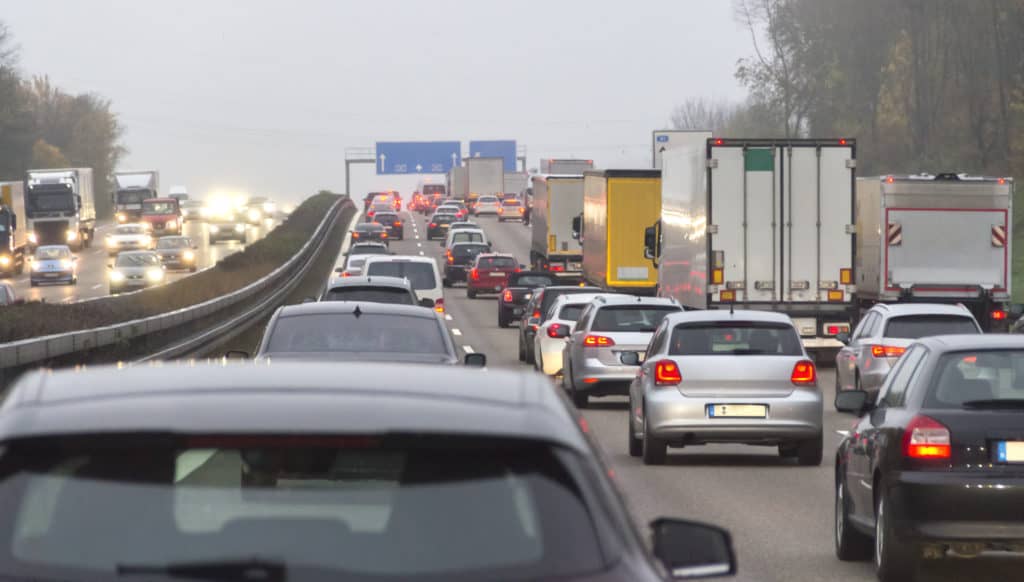
It’s hard to generalize the whole population of a state as being bad drivers, but California consistently comes in the bottom 5 in many driving categories.
Many studies over the past few years have ranked California drivers as the third-worst in America.
This is probably due to a couple of different factors, which include the outdated road infrastructure, narrow spaces, and frequent traffic jams that this area faces.
Some specific traffic problems that California faces include a high rate of DUI incidents, uninsured drivers, and parking violations. Sometimes if the state has a reputation for being carefree, that can lead to some bad driving habits!
Speaking as someone who has frequently driven around the streets of California, you almost have to be a risky driver in order to get anywhere! It’s amazing that I didn’t get involved in a crash more often due to the combination of risks and driving hazards.
6. Earthquake Risk
Natural disasters are some of the most dangerous and common problems that Santa Cruz faces.
California is famous for its placement near the San Andreas faultline. There are multiple plate boundaries along the state, which give it a higher than average risk for earthquakes. California has already faced multiple dangerous quakes over the years, including a recent one in 2019 that was rated as a 7.1 on the Richter scale.
These earthquakes are not always severe, but they have the capacity to cause major damage to cities and kill thousands of people. The aftereffects of major earthquakes can also cripple local economies and lead to related disasters such as fires and sinkholes.
California (and Santa Cruz) regularly experience low-level earthquakes, but these have the potential to shift into major disasters without warning.
5. Mudslide and Flooding Risk
Mudslides and floods are other natural disasters that beachside towns like Santa Cruz often face. Due to the warm weather and high humidity, rainstorms are frequent and heavy in this area. The winter season is particularly wet.
Many homes are built on sloped and unstable ground, which can lead to dangerous mudslides that can harm people and property. In January of 2021, over 5,000 Santa Cruz residents received an evacuation order because of mudslide hazards.
Homes are major investments in California, and mudslides can cause massive financial damage to homeowners. Blackouts are also common during storms and flooding, and some people can get trapped in hard-to-reach areas.
Flooding and water damage can also cause long-term problems like foundation damage and mold.
4. Droughts
Despite the warm weather and rainfall that California experiences, drought is a major recurring issue. Summers in this region are hot and dry, and the area doesn’t have enough local water sources to support the state’s massive population.
Drought occurs every year in California and water needs to be piped in from out of state or imported in the form of millions of plastic bottles (which then contribute to the trash issue).
Citizens often need to take part in water-saving initiatives, such as limited water toilets and reduced lawn care. Wealthy residents sometimes ignore these laws because the fines for overusing water don’t affect them significantly. This can then cause further discontent between residents and deepens the class divide.
3. Wildfire Risk
The effects of droughts can lead to yet another natural disaster: Wildfires.
Anyone who has been paying attention to the news over the last few years will notice that California has been burning at a record pace lately. Many areas of the state are choked with smoke and haze during the summer and fall months.
Property damage, sickness, pollution, and environmental destruction are all common effects of wildfires in Santa Cruz. In 2020, more than 500 homes and structures were destroyed in the Santa Cruz area. Thousands of residents were urged to evacuate the area and over 80,000 acres of the Santa Cruz mountains burned.
were destroyed in the Santa Cruz area. Thousands of residents were urged to evacuate the area and over 80,000 acres of the Santa Cruz mountains burned.
These annual fires are natural results of the dry summer climate, drought, and human impact on the area. They routinely cause massive damage and return year after year.
There aren’t enough resources to fully contain them, which leaves many residents homeless and destitute.
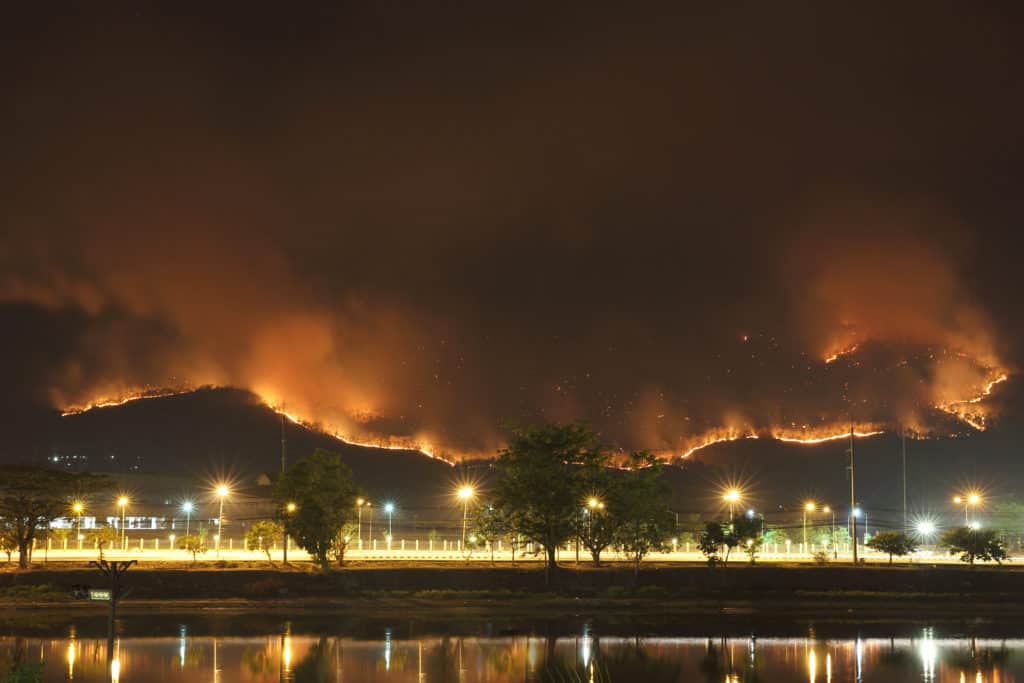
2. High Crime Rate
Santa Cruz has a 56.76 crime rate, which is much higher than the average crime rate of California. It’s in the bottom 3% of cities when it comes to safety. There is an average of 286 crimes per square mile in Santa Cruz.
The rate of property crime and violent crime are both significantly higher than the average of the state of California. Despite its smaller size, this community has one of the highest relative crime rates in the nation.
For more information about Santa Cruz safety statistics, visit neighborhoodscout.com .
.
1. Expensive Housing
Finally, one of the worst issues that Santa Cruz (and all of California) faces is expensive housing. The land is at a premium in beachside California and even low-quality homes are unattainably expensive.
The median price for a single-family home is nearly 1 million dollars. Renting is also extremely expensive and it’s difficult for many residents to find housing that they can afford. The high prices don’t reflect a good quality of life either, and many people struggle to afford even the most basic housing.
California is regularly rated in the top 3 most expensive places to live in the U.S. Gas and transportation are also quite pricey, which makes travel difficult as well.
So while Santa Cruz might seem like a dream destination, it’s got a lot of nightmare fuel hidden under the surface.
Related Topics:
If you like the article above, here are some other similar articles you should check out!
Is There a Lot of Crime in Santa Cruz, California (What You Should Know)
